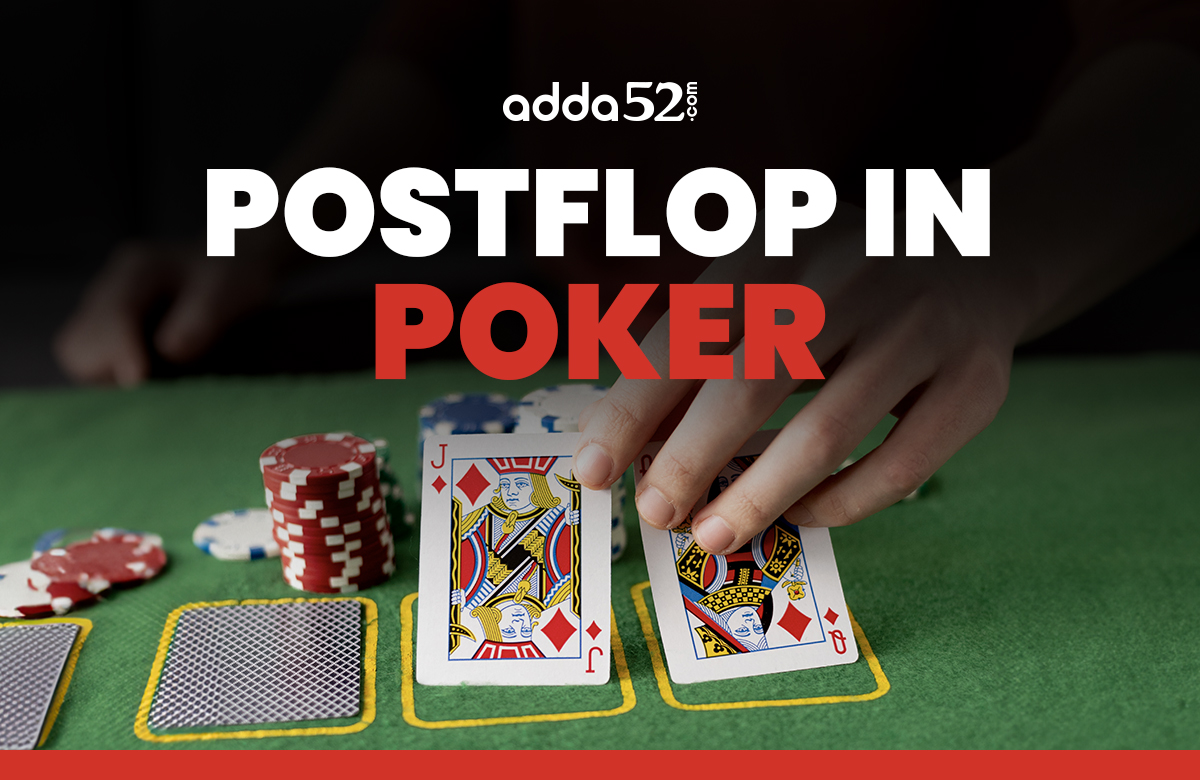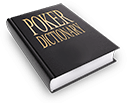What is Flop in Poker

Introduction
If you want to become a successful poker player, it is essential to lay a foundation by acquainting yourself with the fundamental rules and hand rankings. The flop (the 2nd street) is a critical stage in a hand, in which players make decisions that determine the outcome of the game.
Knowing how to play post-flop efficiently is what separates experienced players from novices.
Here’s your complete guide to understanding the flop in Poker.
What is Flop?
‘Flop’ is the name for the second betting round in poker. In this round, the dealer distributes the first three community cards dealt face-up in the center of the table.
Why is it important, you ask?
This moment in the game influences the strategies employed by each participant. Here, players receive important information about the strength of their hands
What Happens During the Flop?
During the flop phase in poker, the dealer lays out communal cards on the table following the initial betting round. These cards are shared among all players and are combined with their ‘hole’ cards to form the strongest possible hand based on standard hand rankings.
The revelation of these community cards during the flop provides crucial insights into the potential strength of opponents' hands. Each player retains their two private cards, which they blend with the three community cards to craft their optimal hand. This phase initiates the crucial decision-making process for players, as they assess the potential of their hands relative to the community cards and their opponents' likely holdings.
Subsequent to the flop, another round of betting ensues, presenting players with various strategic options such as matching the current bet, increasing it, folding their hand, or ‘checking’ if no one has made a bet.
The importance of the flop cannot be overstated. Factors such as the composition of the community cards, players' seating positions on the table, and their perceived range of hands all determine the course of action. Players must carefully assess the strength of their hands relative to the possibilities presented by the flop and anticipate the actions of their opponents.
Following the flop, players may experience shifts in their hand strength. Those previously in advantageous positions might find their hands weakened by unfavorable community cards, whereas others may witness major improvements.
Experienced players utilize this phrase of the game to gain maximum value from strong hands, pull off successful bluffs, or implement advanced tactics like semi-bluffing to make their opponents involuntarily act as they desire.
Once betting on the flop concludes, two additional community cards are unveiled in the subsequent 'turn' and 'river' rounds. These cards, combined with those from the flop, complete the five-card poker hand for each player.
How the Flop round influences Poker Strategy
In the world of Poker, understanding how to play during a flop round is integral to mastering the game.
Here’s how the ‘flop’ Poker round shapes the strategies and decisions of players involved.
Assessing Hand Strength
The flop unveils possibilities and limitations for each player's hand. A flop can either enhance or weaken a hand, depending on how well it connects with the player's hole cards. For instance, a player holding a pair of aces might find their hand strengthened if the flop includes another ace. If the flop does not complement their hand, it might become weaker relative to other players' potential hands.
Reading the Board
The flop's texture refers to the composition of the community cards and how they interact with each other. Factors such as the presence of flush draws, straight draws, or coordinated cards can drastically influence the strength of various hands. A ‘wet’ flop with multiple drawing possibilities tends to require a more cautious approach, as opponents are more likely to have strong drawing hands. On the other hand, a ‘dry’ flop with limited drawing potential may allow for more aggressive betting.
Adapting to Opponents' Reactions
Players must keenly observe how their opponents react to the flop. A sudden increase in betting or a passive response can provide valuable insight into the strength of their hands. Skilled players use this information to adjust their own strategy accordingly, whether by bluffing, slow-playing a strong hand, or folding weaker holdings.
Positional Advantage
The position of a player relative to the dealer button greatly impacts their strategy during the flop round. Players in late position have more information about their opponents' actions before they make their own decisions, allowing them to play more aggressively or passively based on the actions of others.
Hand Range Analysis
Skilled players use the information provided by the flop to narrow down their opponents' possible hand ranges. By considering factors such as pre-flop betting patterns, the texture of the flop, and opponents' reactions, players can make more informed decisions about whether to continue in the hand or fold.
Understanding Pot Odds and Implied Odds
Pot odds refer to the ratio of the current size of the pot to the cost of a contemplated call. Implied odds take into account potential future bets that may be won if a drawing hand hits. A favorable flop might offer enticing pot odds for drawing hands, while an unfavorable flop might require players to reassess the value of chasing draws.
Managing Risk and Bankroll
Navigating the twists and turns of a poker game involves more than just playing the cards you are dealt. The flop stage, where the dealer reveals three community cards, can make or break a hand. Even a strong starting hand can falter depending on what lands on the table.
To succeed in poker, players need to strike a balance between risk and reward.
It is not just about the strength of your hand. It is also about how much you are willing to bet on it. This is where understanding your own risk tolerance and managing your bankroll effectively come into play.
Frequently Asked Questions
What is a flop in poker?
In poker, the 'flop' refers to the moment when the dealer lays out three community cards face-up on the table. These cards are shared by all players and can be combined with their own cards to form the best possible hand.
Why is it called the flop in poker?
The term 'flop' comes from the sound the cards make when they are spread out on the table after the initial round of betting. It has become a standard term in the poker world over time.
How many flops are there in poker?
There is only one flop in poker hands. It consists of three community cards dealt simultaneously, followed by additional betting rounds.
What's the point of the flop?
The flop serves a couple of purposes. It provides players with new information about the strength of their hands and kicks off another round of betting, giving players the chance to fold, call, raise, or check based on the cards on the table and the actions of their opponents.
Conclusion
Seasoned poker players know that the ‘mantra’ of success in poker is to learn how to deal with flop Poker round effectively. By carefully assessing their hand strength, watching their opponents, and considering the odds, players can develop strategies to make the most of favorable situations and minimize losses when things get tough. The flop is not just another betting round - it is an opportunity to showcase your abilities and wits on the table. When you reach this point in the game, it becomes vital to make wise choices in your actions!
